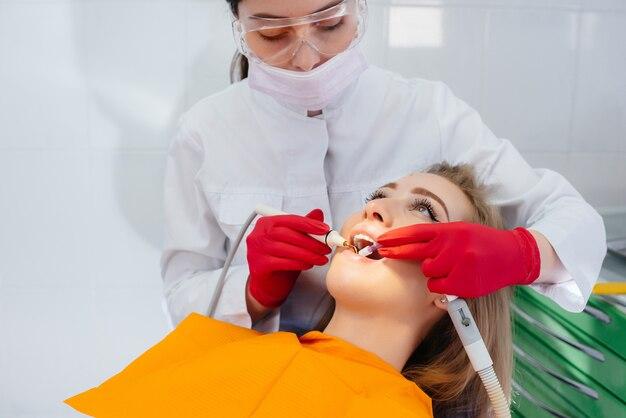The Evolution of Teeth Cleaning: Historical Perspectives
Teeth cleaning has come a long way from ancient times to modern dental practices. The journey of oral hygiene reflects humanity's understanding of health, technology, and culture. Teeth Cleaning Cost in Dubai has become an essential aspect of dental care, mirroring global trends in oral hygiene practices. Understanding the historical evolution of teeth cleaning not only highlights significant advancements in dental care but also emphasizes the importance of maintaining oral health.
Ancient Practices of Oral Hygiene
The history of teeth cleaning can be traced back to ancient civilizations, where rudimentary methods were employed to maintain oral hygiene. The earliest evidence of teeth cleaning dates back to around 5000 BC in ancient Egypt, where people used frayed twigs from the Salvadora persica tree, known as "miswak," to clean their teeth. These twigs were effective in removing food particles and plaque due to their fibrous nature and natural antibacterial properties.
In addition to miswak, ancient Egyptians also utilized various powders made from crushed bones, oyster shells, and even ashes to scrub their teeth. Archaeological findings indicate that they placed great emphasis on oral health, with dental tools often found in tombs. This indicates that they believed in the significance of maintaining a healthy mouth, reflecting a sophisticated understanding of hygiene for that era.

The Influence of Ancient Civilizations
As civilizations advanced, so did their dental care practices. The ancient Greeks and Romans introduced more structured oral hygiene methods. They created rudimentary toothpaste made from a mixture of crushed bones, charcoal, and various flavoring agents to combat bad breath and promote freshness. The Greeks even emphasized the importance of mouth rinses made from vinegar and salt.
In medieval Europe, dental care took a different turn. While hygiene practices suffered during the Dark Ages, the Renaissance sparked renewed interest in personal grooming, including oral health. Dentists began to emerge as specialists, and tools became more refined. Toothbrushes made from animal hair attached to sticks were introduced, resembling modern-day toothbrushes, while tooth powders became common.
The Birth of Modern Dentistry
The 18th and 19th centuries marked a pivotal moment in the evolution of teeth cleaning and dental care. The invention of the modern toothbrush in 1780 by William Addis in England revolutionized oral hygiene practices. The toothbrush was initially made with hog bristles and a wooden handle, providing a more effective means of cleaning teeth than previous methods.
In the early 19th century, the first commercial toothpaste was created by Dr. Peabody in the United States. This marked a significant shift from traditional tooth cleaning methods, as people began to adopt toothpaste alongside their toothbrushes. The combination of the two became the standard for dental care, setting the foundation for modern oral hygiene practices.
Advancements in Dental Products and Technology
The 20th century brought about remarkable advancements in dental care products and technology. The introduction of fluoride in toothpaste during the 1950s was a groundbreaking development that significantly reduced the prevalence of cavities and tooth decay. The rise of electric toothbrushes in the late 20th century provided individuals with more options for efficient teeth cleaning, offering superior plaque removal compared to manual brushes.
As dental research advanced, the importance of regular professional teeth cleaning became widely recognized. Dentists began to advocate for routine check-ups and cleanings to prevent oral diseases. This awareness led to the establishment of dental hygiene as a recognized profession, with dental hygienists playing a crucial role in educating patients about oral care and maintaining healthy smiles.
The Role of Dental Hygiene Education
Education around dental hygiene has played a vital role in shaping public perceptions of oral care. With the rise of awareness campaigns in the late 20th century, people began to understand the connection between oral health and overall well-being. Initiatives by dental associations and health organizations emphasized the importance of regular dental visits, proper brushing techniques, and dietary choices that support oral health.
In Dubai, dental clinics have also embraced educational programs to promote good oral hygiene practices among residents. These efforts aim to reduce the prevalence of dental diseases and encourage individuals to invest in their oral health. The cost of teeth cleaning services has become a necessary consideration, as people increasingly recognize the value of professional care in maintaining healthy teeth and gums.
Modern Innovations and Trends
Today, teeth cleaning has evolved into a highly specialized field. Dental professionals now employ advanced technologies such as laser treatments and digital imaging to enhance the cleaning process and improve patient outcomes. Innovations in cosmetic dentistry, including teeth whitening and veneers, have also gained popularity, reflecting the desire for not only functional but aesthetically pleasing smiles.
Furthermore, the rise of at-home dental care products, including whitening kits and advanced electric toothbrushes, has empowered individuals to take charge of their oral hygiene. This shift towards preventive care highlights the evolution of teeth cleaning from a basic necessity to an integral aspect of self-care.
Conclusion
The evolution of teeth cleaning reflects humanity's quest for health and hygiene through the ages. From ancient practices to modern dental technologies, each era has contributed to our understanding of oral care. As we move forward, the importance of maintaining healthy teeth and gums will continue to be a priority, with ongoing advancements in dental care shaping the future of oral hygiene practices. The historical journey of teeth cleaning serves as a reminder of our collective commitment to oral health, emphasizing that a bright smile is rooted in a rich legacy of care and innovation.
